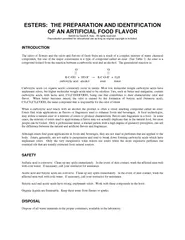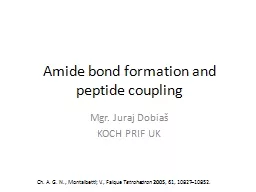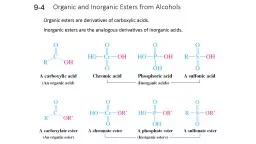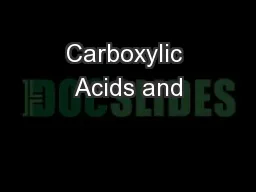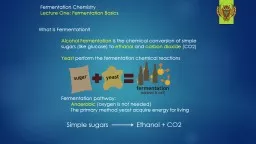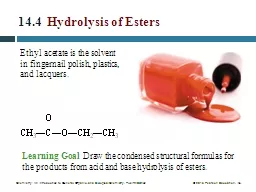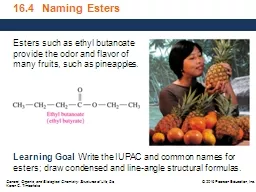PDF-ESTERS THE PREPARATION AND IDENTIFICATION OF AN ARTIFI
Author : min-jolicoeur | Published Date : 2015-06-12
Katz All rights reserved Reproduction permitted for educat ional use as long as origi nal copyright is included INTRODUCTION The odors of flowers and the odors and
Presentation Embed Code
Download Presentation
Download Presentation The PPT/PDF document "ESTERS THE PREPARATION AND IDENTIFICATIO..." is the property of its rightful owner. Permission is granted to download and print the materials on this website for personal, non-commercial use only, and to display it on your personal computer provided you do not modify the materials and that you retain all copyright notices contained in the materials. By downloading content from our website, you accept the terms of this agreement.
ESTERS THE PREPARATION AND IDENTIFICATION OF AN ARTIFI: Transcript
Download Rules Of Document
"ESTERS THE PREPARATION AND IDENTIFICATION OF AN ARTIFI"The content belongs to its owner. You may download and print it for personal use, without modification, and keep all copyright notices. By downloading, you agree to these terms.
Related Documents

